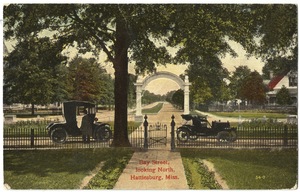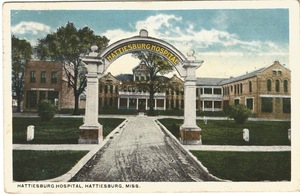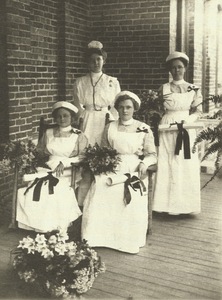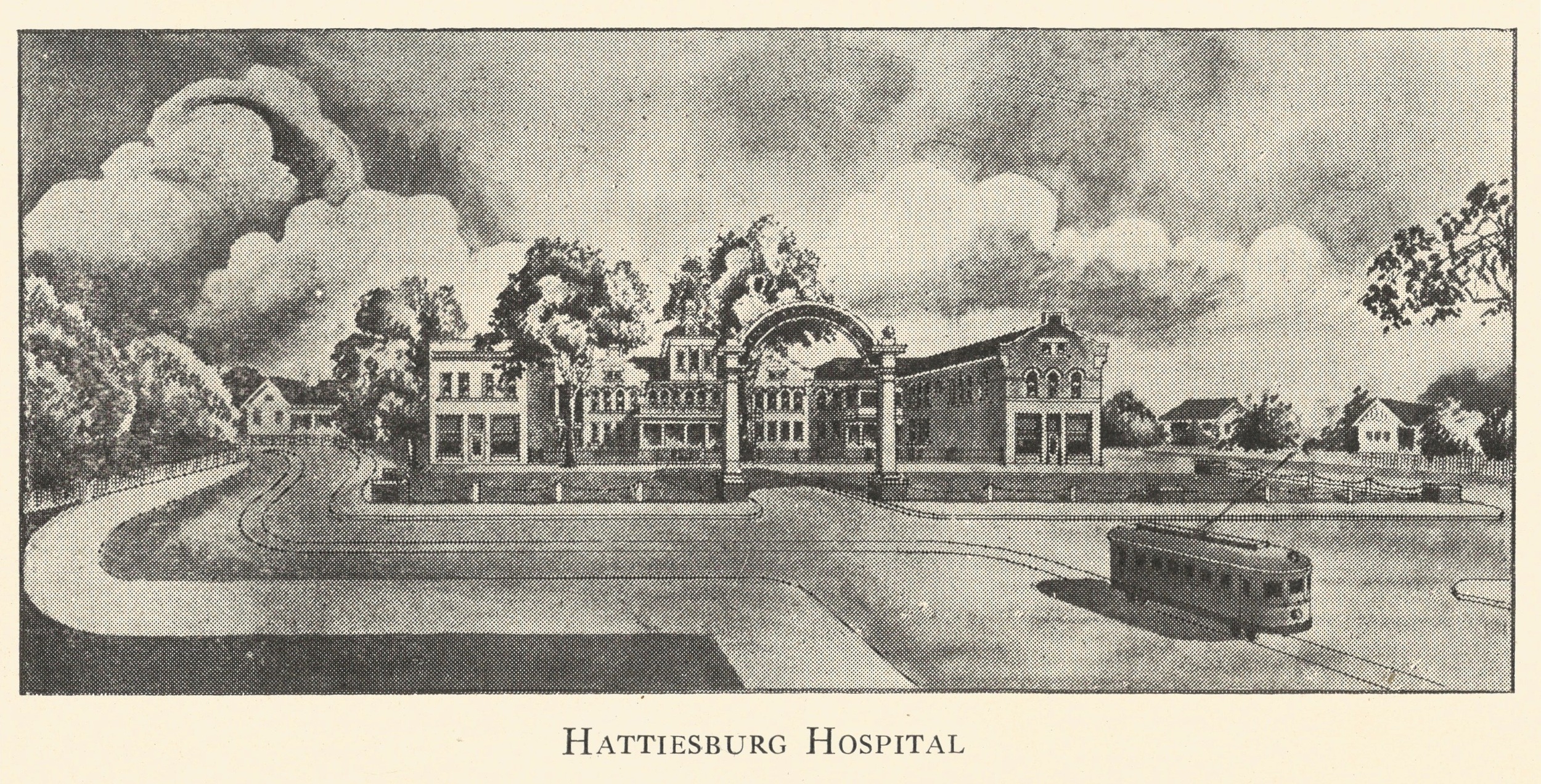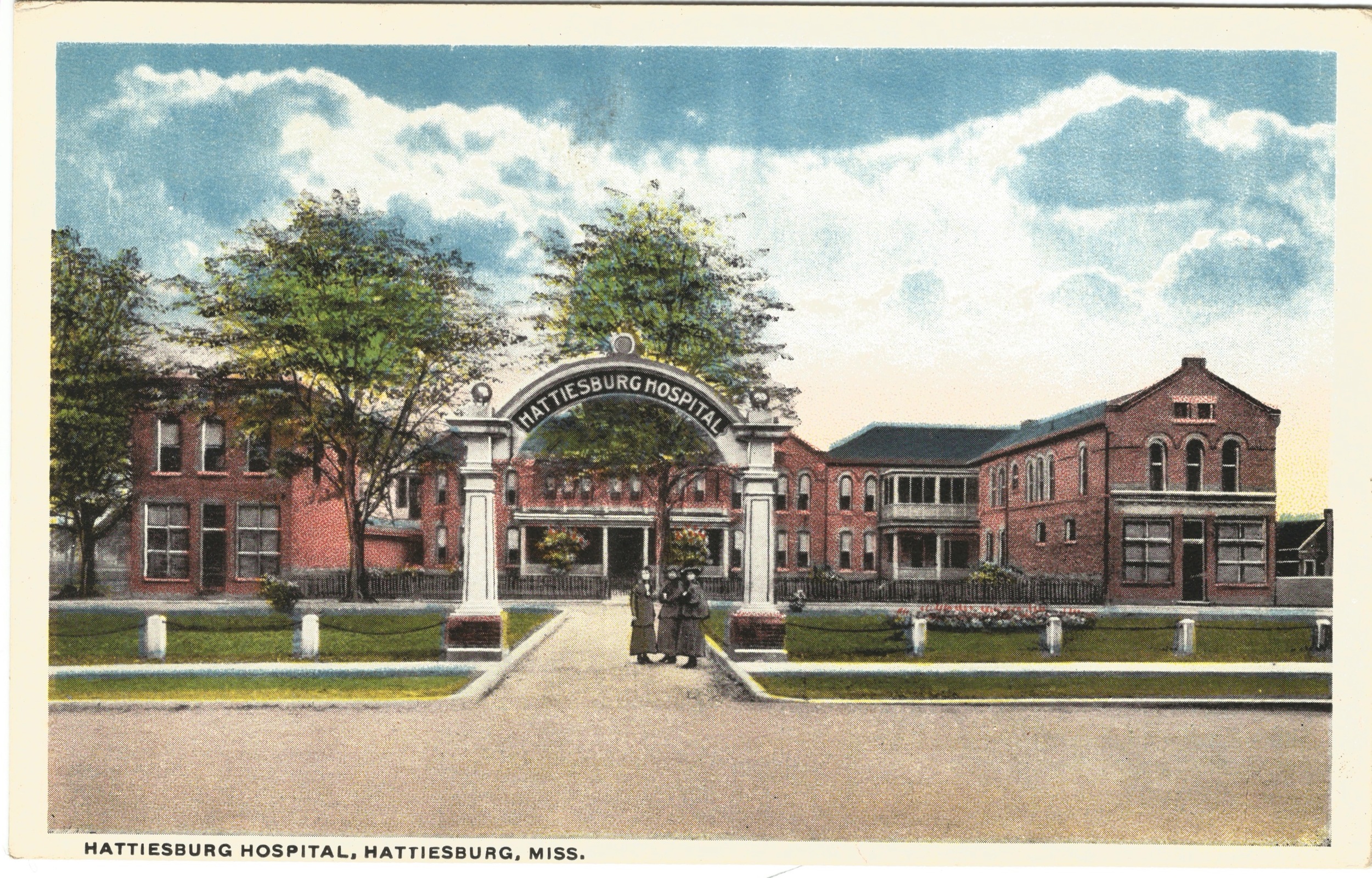The Gulf & Ship Island Hospital, founded in Hattiesburg in 1902 and built on this four-acre site at the end of Bay Street (600 Hall Ave. and Bay) in 1903, evolved into Hattiesburg Hospital by May 1908 with a change in ownership from the G. & S. I. Railroad to Dr. Theophilus Erskine Ross, MD (1864-1935). Dr. Ross long served as its proprietor and president, while maintaining his medical office at his Ross Building downtown. (Hattiesburg Daily News, 26 April 1908; 21 May 1908; 15 January 1915) Dr. Lawrence Boykin Hudson (1883-1934) assisted Ross there as a surgeon as well as Dr. A. L. Thompson who served as house surgeon.
Ross’s longtime superintendent was the brilliant Jennie Mae Quinn Cameron (1880-1976). A Pennsylvania native, 30-year-old Quinn was recruited by Hattiesburg Hospital in October 1910 to become the hospital’s superintendent of nurses as well as the director of the hospital’s nurse training school. She held these positions until her marriage in 1917 to James Alexander Cameron, a wholesale grocer in Hattiesburg. During her important period of service, she was responsible for the establishment of the Forrest County Nurses Association (which consisted of her institution’s nursing alumnae and South Mississippi Infirmary’s alumnae). This led to her organization of the Mississippi State Nurses Association (first called the Mississippi State Association of Graduate Nurses) in June of 1911 at Natchez Charity Hospital. She had been involved in nurse associations before coming to the state, and she was an outspoken proponent of the need for Mississippi to have nursing associations and licensure. She led the Hattiesburg nurses to Natchez in 1911, and largely the nursing alumnae of Hattiesburg Hospital, South Mississippi Infirmary, and Natchez Charity Hospital created the state organization. Jennie Quinn Cameron came to be called the first lady of Mississippi nursing. She would serve as the first president of the Mississippi Nurses Association in 1911 and as the first president of the Mississippi State Board of Examiners of Nurses in 1914.
The first image, dated 1914, looks north down Bay Street from the front steps of Hattiesburg Hospital. One can see not only the wrought iron fence at the street but also the back of the iconic arched sign and the wide Bay Street boulevard ahead. The second image is a lithograph from the 1914 Pine Burr, the annual of Hattiesburg’s Mississippi Woman’s College. It reveals the lovely site at the end of Bay Street and how the streetcar line curved before the hospital. The other two images depict Hattiesburg Hospital in 1918 and 1919. On the back of one postcard, a World War I soldier has written, “Passed this hospital on the way to and from Camp Shelby, Miss.” These images reveal the iconic decorated arch emblazoned with the words “Hattiesburg Hospital” and in the background, the wing on the left identifies the X-ray and Dispensary Departments. This was not only a critical medical institution but the structure was also a Piney Woods architectural landmark. See also the image of Superintendent Quinn with three nurse graduates holding their diplomas on the hospital’s porch around 1912.
Hattiesburg’s King’s Daughters Circle was long involved with charity care at the hospital, and eventually the institution transitioned to become King’s Daughters Hospital at Hattiesburg, equipped with 55 beds and focused on both private and general/charity care. The Mississippi Legislature, as well as the city of Hattiesburg and the Forrest County, funded the hospital with appropriations in the years 1920 and 1921. During that period, Miss Cora Merritt served as superintendent.
Mississippi Methodists, led by Hattiesburg timber baron W. S. F. Tatum, formed a hospital committee in 1918 to locate, erect, or buy a hospital to create a Methodist hospital in Hattiesburg. By 1920, the Methodists purchased the King’s Daughters site, and by 1921 Methodist Hospital was chartered and opened. In November 1925, the Mississippi conference of the Methodist Episcopal Church, South, voted to erect a 75-bed hospital at a cost of $265,000 at this site to replace the existing structure. This new hospital structure was completed and occupied in 1926. Methodist Hospital and its nurse training school evolved into Wesley Health System by 1984 and subsequently into the 211-bed Merit Health Wesley in 2015. See last month’s Images column for more information on Dr. Ross and the G. & S. I. Hospital.
If you have an old or even somewhat recent photograph which would be of interest to Mississippi physicians, please send it to the Author and Editor, or by snail mail to the Journal.

